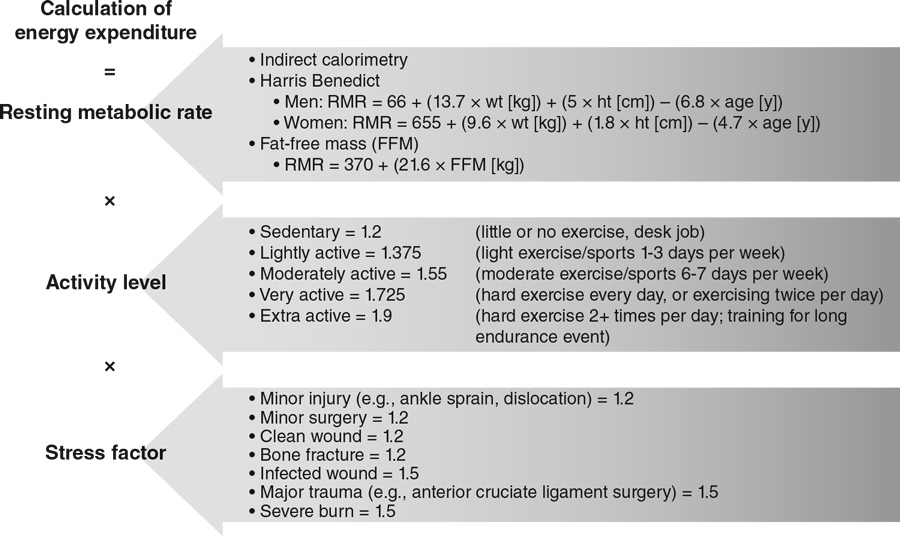Supporting Injury Recovery
This is an excerpt from Nutrient Timing by Lauren Link.
Although something that no athlete wants to deal with, it’s nearly inevitable that at one point or another you will have to deal with at least a minor injury. It’s important to note that although no amount of good nutrition can take away all risk, solid nutrition habits can help reduce your risk for many modes of injury (especially soft-tissue and bone injuries) and also support a healthy immune system. However, even athletes with the best nutrition habits can still get injured, so the following section will discuss the vital role that nutrition plays in injury recovery.
Supporting Energy Needs Through Recovery
One of the most important factors in recovering from an injury is continuing to adequately support your caloric needs. A common mistake for injured athletes is to assume that because they’re not practicing or training their energy expenditure is vastly lower. Although calorie needs may be lower while not training, it’s usually not nearly to the extent that one might assume—and if recovering from a significant or traumatic injury it’s possible that needs might actually be remain similar. This is because healing takes a considerable number of calories: As noted by Smith-Ryan and colleagues (2020), during injury recovery an athlete’s BMR increases to match the energy demands of rebuilding and repairing the damaged tissue.
In addition to factoring in physical activity to determine caloric needs, as discussed in chapter 2 (e.g., using crutches), you should also factor in stress, depending on the type of injury sustained (e.g., postsurgery wound healing). You would multiply your BMR with both the activity factor and this stress factor to calculate your total needs to support healing. Figure 12.2 expands on how you might calculate those needs.

Reprinted by permission from A.E. Smith-Ryan, K.R. Kirsch, H.E. Saylor et al., “Nutritional Considerations and Strategies to Facilitate Injury Recovery and Rehabilitation,” Journal of Athletic Training 55, no. 9 (2020): 918-930, https://doi:10.4085/1062-6050-550-19.
If your estimated expenditure is indeed lower than usual, a simple approach to accommodating this change in calorie needs is to think back to the balanced plates discussed in chapter 2 and aim to have your plate filled with one-half fruits and veggies, one-fourth carbohydrate, and one-fourth protein. This will ensure you get adequate carbohydrate and protein to support recovery and healing but help keep overall caloric intake balanced while you’re unable to exercise as much.
You should also plan to continue eating frequently while recovering from an injury. It can be easy to let this habit lapse if you find your appetite is lower while not as physically active, but remember that one of the benefits of eating frequently is helping promote MPS. So though it’s reasonable to adjust portion sizes and perhaps cut out some snacking while injured, you should still strive to eat regularly and avoid skipping meals to help prevent unnecessary muscle loss. Although it may not be realistic to eliminate them completely, you might also try to limit foods high in unhealthy fats and refined sugar while you’re injured, as well as beverages such as soda and alcohol. This is in part because of the excess calories that these foods can contribute while expenditure is lower, but also because these foods can contribute to inflammatory responses, which are already heightened during injury recovery.
It is well supported that protein needs are higher during recovery from injury. Tipton (2015) suggests that during the rehabilitation process, athletes should strive for protein intakes of at least 1.6 grams per kilogram per day and ideally closer to 2.0 to 3.0 grams per kilogram per day. He also emphasizes including leucine-rich foods (3 g per serving), because leucine is the primary amino acid responsible for stimulating MPS. One primary reason for these higher protein needs is to prevent MPB. It is nearly impossible to avoid muscle atrophy completely during injury recovery, especially if you have limited mobility or an immobilized limb. However, adequate protein intake can help attenuate this loss and set you up for an easier return to training when you’re recovered.
In addition to appropriate overall calorie and protein intake, good hydration habits are essential to recovery. It can be easy to let hydration fall to the wayside when recovering from an injury because you are not working out and replacing sweat losses nearly as much as usual, but adequate water intake is key in many healing processes. Although these overall practices are good for any injury, there are also some considerations and specific nutrients that are helpful in recovering from different kinds of injuries.
More Excerpts From Nutrient TimingSHOP

Get the latest insights with regular newsletters, plus periodic product information and special insider offers.
JOIN NOW


